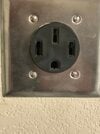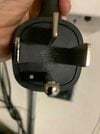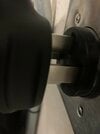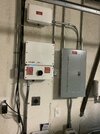3 years ago while I was upgrading electrical for a kitchen remodel I had a NEMA 14-50 outlet with a 50 amp circuit installed in garage by the kitchen remodel contractor’s electrician. I provided them with the instructions from the Tesla website. My model Y has an EDD in December so I decided to open the 14-50 adapter I bought from Tesla website to see how it plugs in and to check clearances for the mobile adapter when the car shows up. Much to my chagrin, tha Tesla 14-50 adapter and the wall socket don’t seem compatible. The ground receptacle on the wall socket is semi spherical and the Tesla adapter ground plug is spherical. In addition, while the three other prongs align with wall socket, they seem to to be hitting resistance. In other words they don’t seem to want to plug into the wall socket. The resistance seems to be coming from other than the ground plug and receptacle. I’m hesitant to push too hard to see if it will plug in. (circuit breaker is in off position as I am futzing with this just in case you were wondering!). I called my regular electrician to come out and see what is what. I may end up replacing NEMA 14-50 outlet with a Tesla wall charger.
Has anyone experienced anything like this?
I’ve attached a few photos of situation.
Has anyone experienced anything like this?
I’ve attached a few photos of situation.








